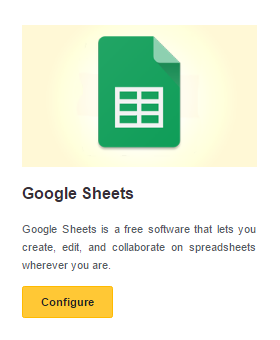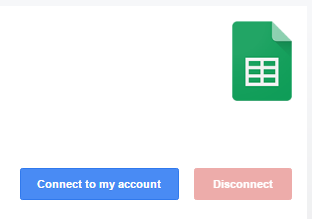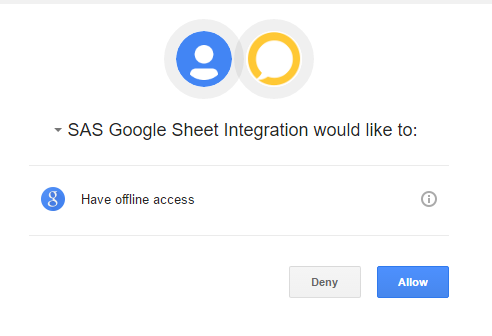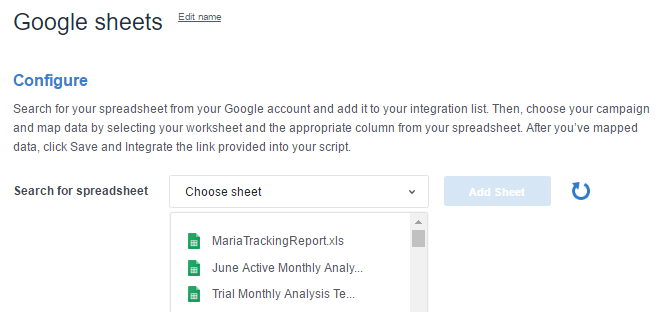How to integrate SAS with Google Sheets
One of the many features that Google offers is Google Sheets, spreadsheet software that works just like Excel. If you are currently tracking calls using this feature, or you'd like to start, integrating the Google Sheets app into your call script will push the data that the operators collect from your callers directly to your spreadsheet. This information would be immediately available every time an operator closes a call.
In this article we'll discuss:
Looking at Your Script Variables
1
Before you can link Google Sheets to the SAS Desk app, you'll need to determine which script variables to integrate.
Each script path will have custom step labels and default variables, such as [FirstName], [PhoneNumber], [Email], etc. If you have multiple paths in your script, they will each have a different set of variables. So, you'll need to access the call script builder to determine the step labels in the specific path you are mapping.
Keep in mind that you can build a separate integration for every script path, each with their corresponding step labels.
2
Write down the step labels. This is what allows the app to push the correct data to your spreadsheet.
Connect Google Sheets to the SAS Google Sheets App
1
Now that you've documented the step labels, it's time to connect the app. Click Apps from the left side menu.
2
From the Apps screen, click Configure under Google Sheets. On the next screen, you'll connect the email address where your Google Sheet is saved.

3
Click the Connect to my account button on the right.

4
You'll see a pop-up that says, "SAS Google Sheet Integration would like to." Click Allow.

1
Now it's time to Configure the spreadsheet. Next to Search for spreadsheet, use the drop down menu to select the specific Google Sheet where you'd like the data to go.

2
After you've selected the correct sheet, the Add Sheet button will become operational. Click Add Sheet.

3
On the left, you'll see the name of the sheet you added. Use the Script drop down menu to select the script that the step labels came from.
4
Now, the Map data drop down will become operational. Here, you'll select the specific worksheet where you'll be tracking the data.
5
Once you've selected the worksheet, the column headers drop down will become operational. The drop down options will be the same as the column headers in your spreadsheet. Select the column header for the cell you are mapping.

6
In the next drop down, you will see options for SAS script variable and Text.
Text: If you are using the spreadsheet to document SAS calls as well as other data, the Text option will allow you to include static data in your Google Sheet to help you differentiate SAS data from other entries.
Select a column header along with the Text option. Now, fill in the blank box with your preferred text. Once text has been entered, the Map data button on the right will be highlighted. Click Map data.

SAS script variable: To map script variables, select the column header that corresponds to the script question, and then select SAS script variable from the drop down.
The script variables drop down will become operational. Select the step label that matches the data from the column header.

Once all options have been selected, the Map data button on the right will be highlighted. Click Map data.

7
Repeat the instructions above to continue mapping each column header and script field. Each new variable will be listed in the Mappings section. To remove any variable from your list, just click the red X button.

Integrate Google Sheets into Your Script
With all of your integration settings complete, you'll need to add the integration into your SAS script.
1
Click the Save changes button in the lower right corner.

2
A pop-up will open containing the integration link. Right click to copy the link text, or highlight the link with your cursor and press CTRL+C. Then, click OK.
3
To complete the integration, follow the web pop instructions in this article. Keep in mind that you'll want to create the web pop step at the end of the script path and before the closing.
NOTE: Some integrations and access to external websites are restricted to designated operator distribution groups. If you are adding either to your script, please reach out so we can make sure your account is assigned to the proper distribution.











